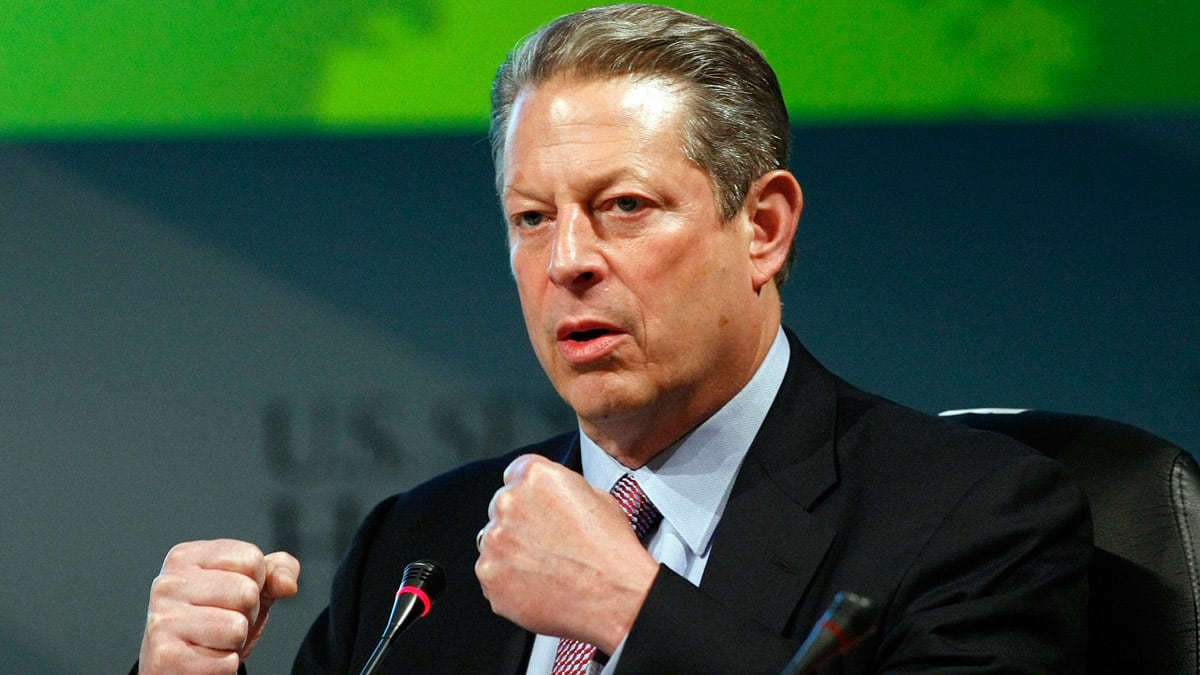What's left of Tropical Storm Lee is pouring water onto the long-suffering cities and towns of the Gulf coast; Hurricane Katia is moving unpredictably but menacingly toward the American mainland. What’s next? When Newsweek looked at the looming threat of massive natural disasters and their impact on American security and society in "The Next 9/11," we emailed former vice president and Nobel laureate Al Gore several questions about the risks ahead. These are his responses:
Is climate change a national security issue? What would be some examples?
Absolutely. Indeed, more than a few top U.S. military leaders have already designated the climate crisis as a national security issue. The stability of governance arrangements in many strategically important regions of the world is threatened by the multiple assaults of climate change, as budgets are drained, competition for resources is enhanced, and populations suffer. To pick one recent example, in Pakistan a year ago, 20 million people were affected by the unprecedented flooding that affected one fifth of the country. The situation there is still not resolved, and analysts have discussed how this massive flood has further destabilized a nuclear-armed country in a region that is already rife with conflict.
Also within the past year, Russia experienced its worst heat wave in over a century, a deep and prolonged crop-killing drought, terrible wildfires, and suffocating smoke that killed tens of thousands and also threatened nuclear plants and nuclear materials. As a result, Russia, Ukraine, and Kazakhstan removed all of their grain from world markets, which contributed (along with other events, many of them also climate related) to the highest rise in world food prices in history.
Kevin Trenberth, a well-known scientist here in the U.S., has said, “Global warming is contributing to an increased incidence of extreme weather because the environment in which all storms form has changed from human activities.” And that’s an important shift in the way scientists frame the connection between the climate crisis and extreme weather events. They used to say that we are “loading the dice,” that is, we are changing the odds of extreme weather events. Now they say that we are also painting more dots on the dice, so that we are not only rolling more 12s, we are now rolling 13s and 14s. So we can expect continued increases in the frequency and severity of extreme floods, droughts, wildfires, storms and other weather events.

Hurricanes would seem to be the most dangerous manifestation, right?
Yes and no. More intense hurricanes, cyclones and typhoons—and a predicted increase in the frequency of the Category 4 and 5 cyclones—are clearly an obvious manifestation, but extreme drought, wildfires, and floods also can and do have devastating impacts upon people, and infrastructure and governments.
Can we imagine plausible hurricane scenarios more intense and destructive than Katrina?
I recently read that some scientists are considering adding a “Category 6” classification to the Saffir-Simpson hurricane scale, which uses wind speed to measure hurricane intensity. They say that what’s important to understand here is that the amount of damage between each category on the scale does not increase in a linear fashion. Each increase (from Category 1 to Category 2) increases the damage potential exponentially. So, yes, there are certainly scenarios in which scientists and planners could envision more intense and destructive hurricanes than Katrina, particularly in countries with less resilience and fewer resources than the United States.
Since 9/11, government has focused on the threat that a terrorist attack or attacks will change the course of American history, as 9/11 certainly did. Isn't it just as likely—or more likely—that the game-changing catastrophes for Americans in coming years will be natural disasters, whether weather related or seismic?
It is of course a crucial function of government to protect our nation from a terrorist attack. The climate crisis, however, is also a threat—though it is of a different nature altogether. The rules of risk assessment are being re-written right before our eyes. This year alone, in the United States, we have had 10 $1-billion-dollar-plus disasters. FEMA is already nearly out of money. Scientists have been warning for years that extreme weather will become even more extreme. So, we know that we must prepare for the impacts of the climate crisis that are already taking place now—bigger and more extreme floods, longer droughts, more damaging wildfires, more intense hurricanes—and we have to cut the pollution that is driving the climate crisis in the first place. To do anything less is to put children, our grandchildren and ourselves in great peril.
Addressing the overall problem of climate change, even with the best policies and best intentions, is a slow process. How best to address the impact we are seeing now?
Let me amend your premise just slightly: big changes in public attitudes can appear to move quite slowly even as, just beneath the surface, they gain unstoppable momentum. Then, when the critical mass of potential change crosses a political tipping point, the change comes suddenly: the Berlin Wall comes down, Tahrir Square sweeps the Mubarak regime away, the U.S. Civil Rights and Voting Rights Acts pass, etc.
Even as we build toward a change in policies to sharply reduce the global warming pollution that is causing the climate crisis, we need to begin the process now of preparing for the disasters that are to come. Policies that presently encourage development in low-lying floodplains and coastal areas should be immediately reexamined. We must make sure that our satellite early-warning systems are in place—in the U.S.—to monitor the weather and the climate. We need public health infrastructure, flexible disaster relief programs, and funding for those programs that isn’t reactive and vulnerable to political blackmail. And, there are other things that we can do to build more resilient crops and farming practices—to help farmers and those living in subsistence cultures to adapt.



